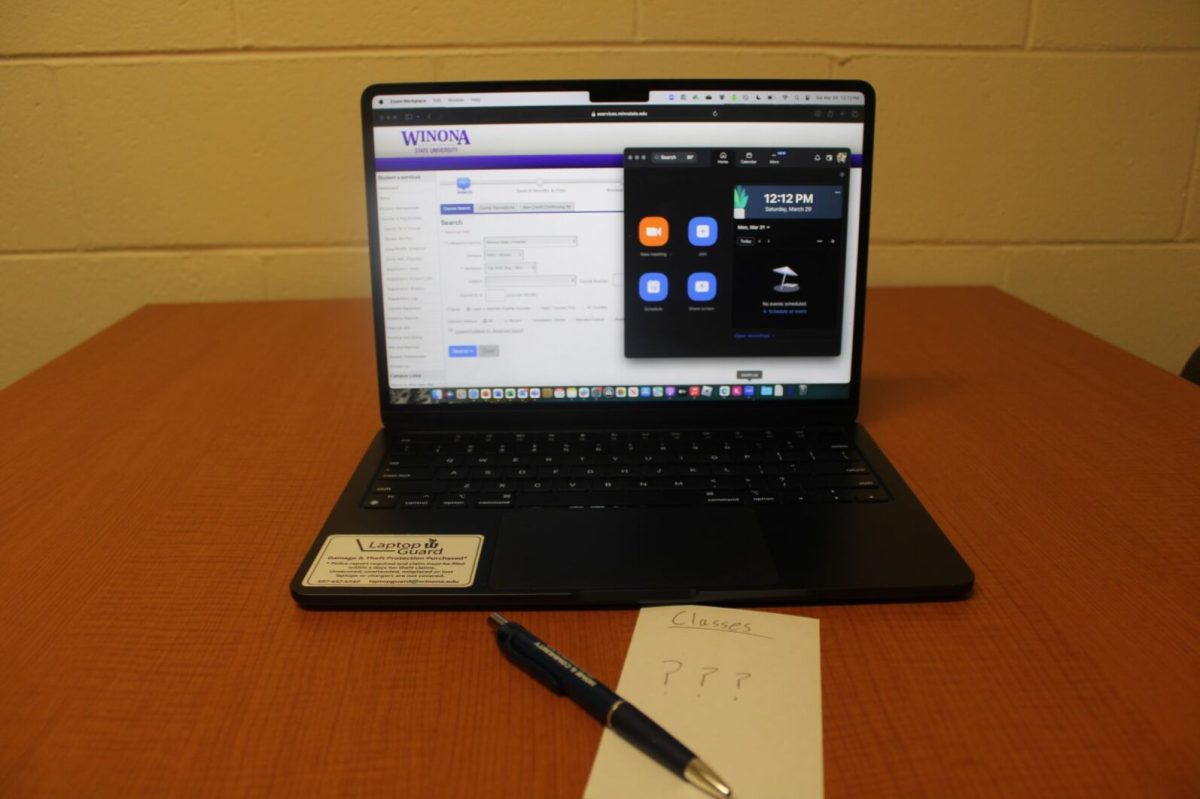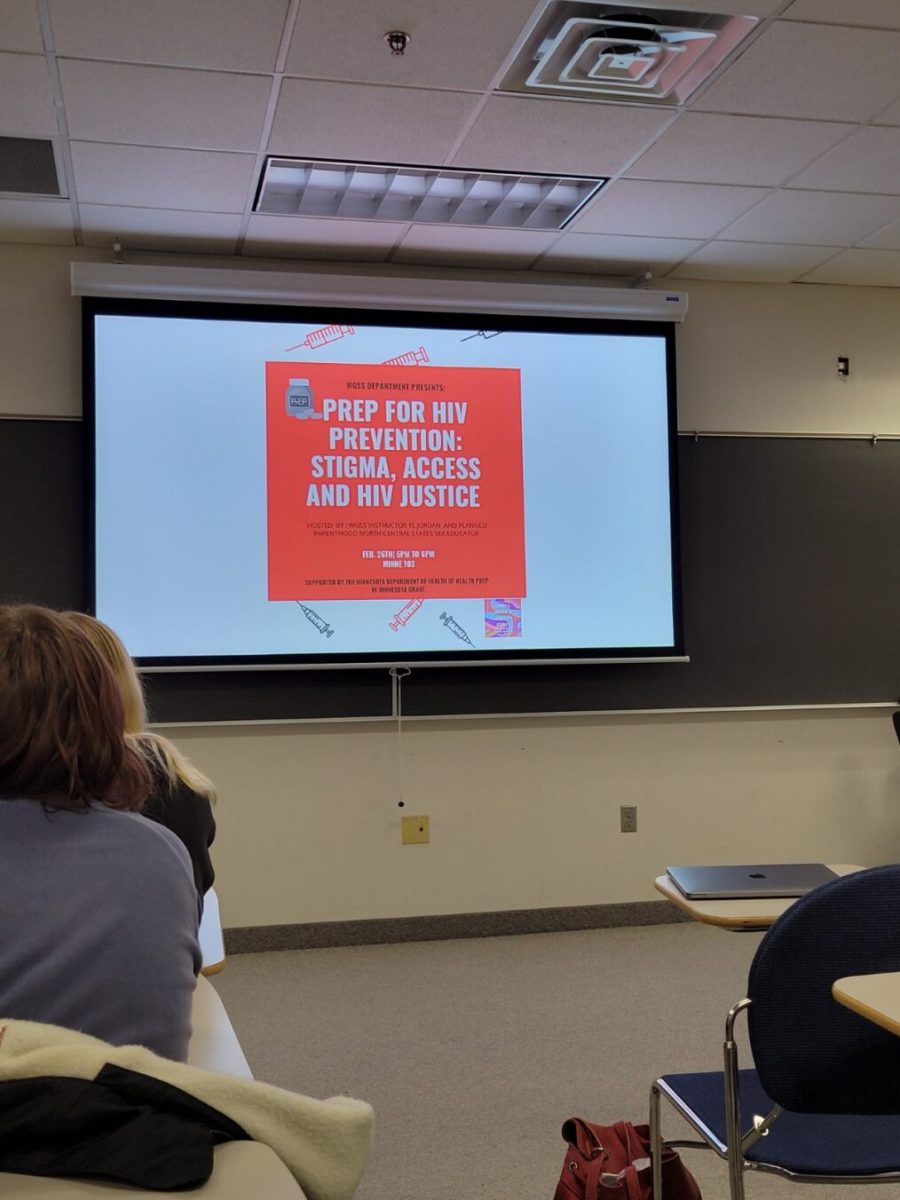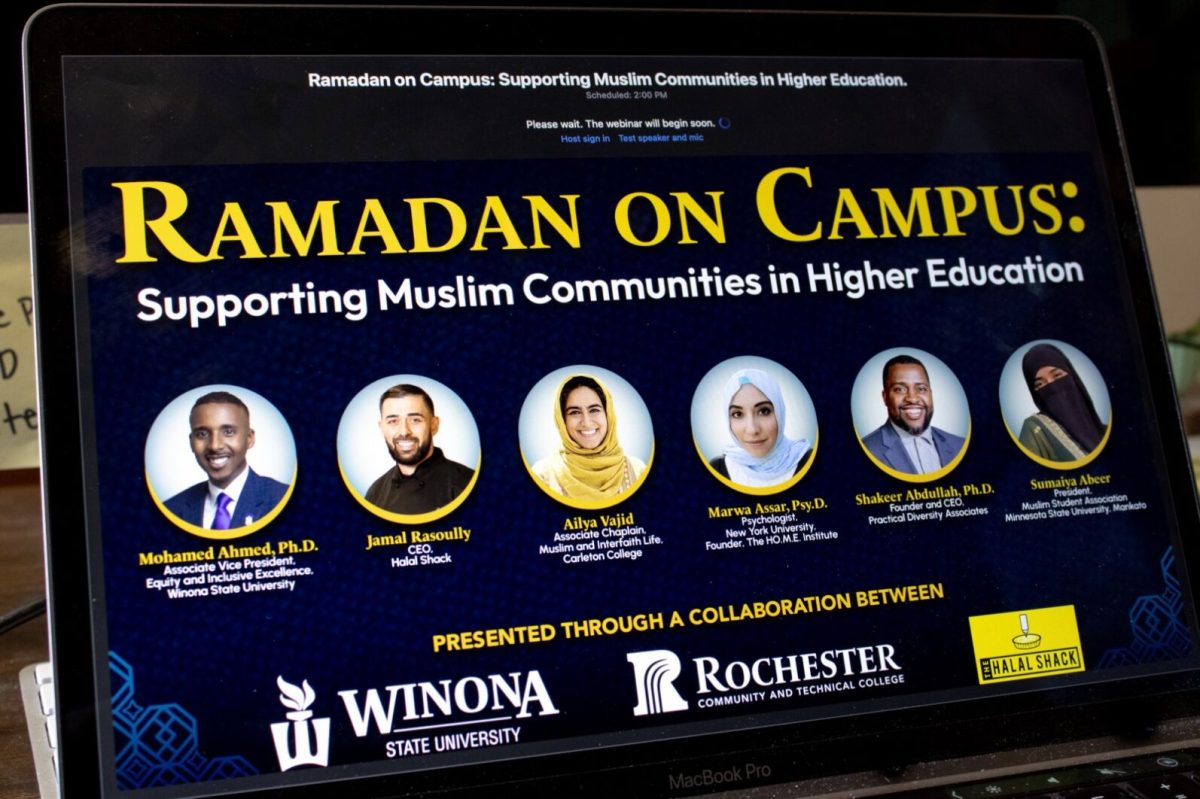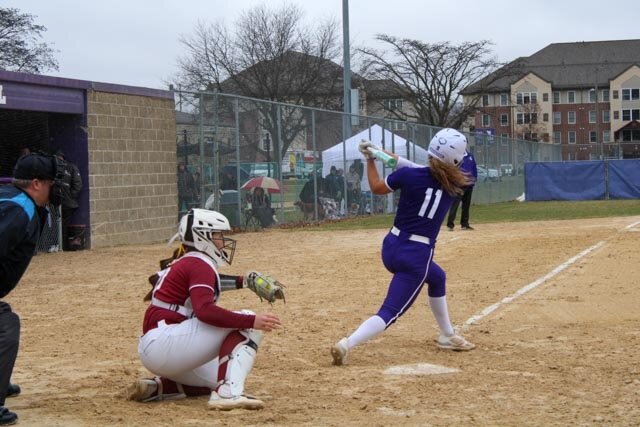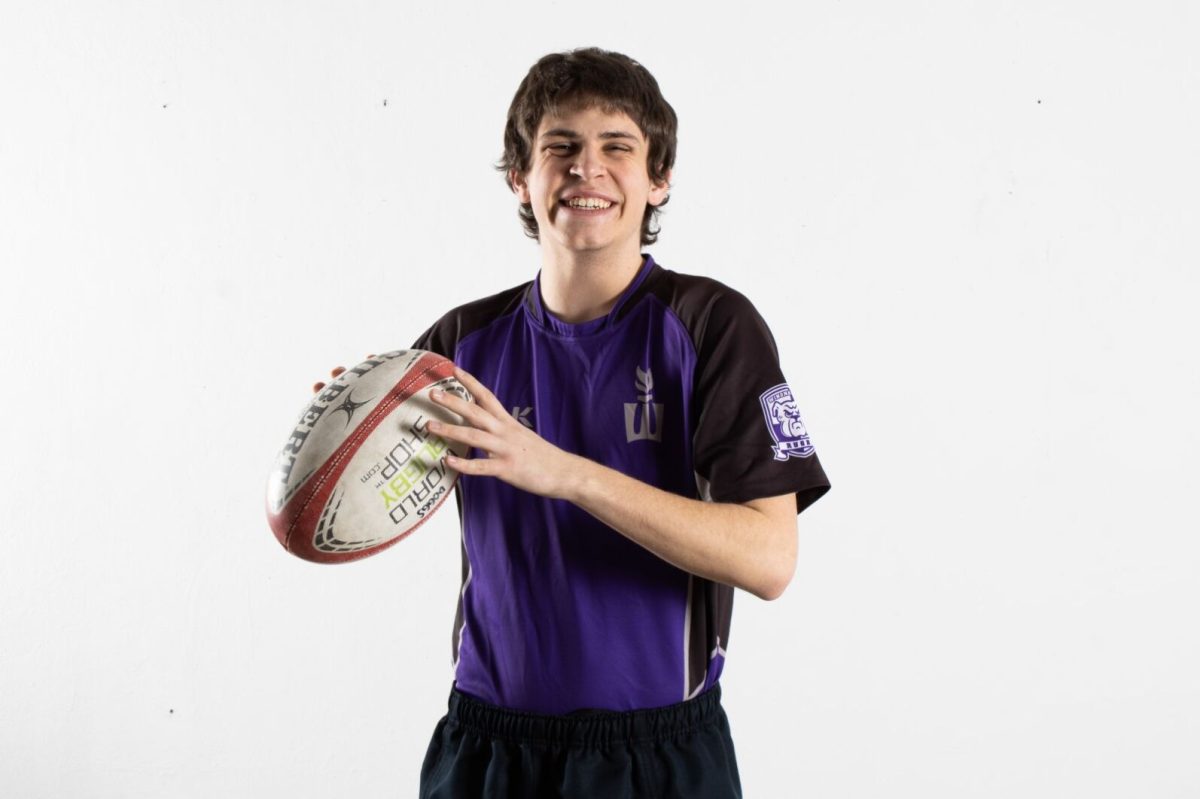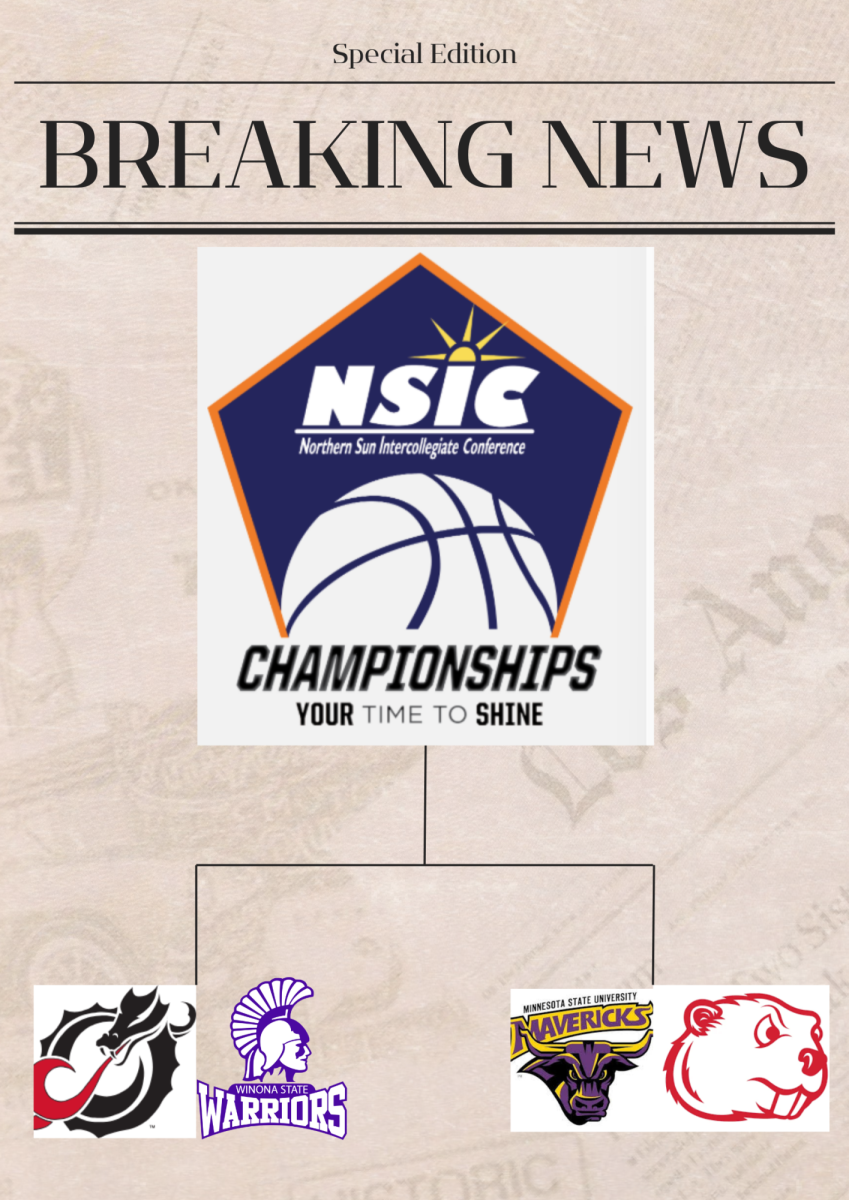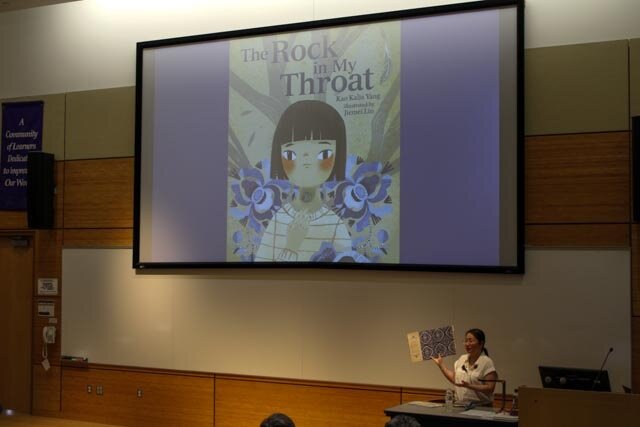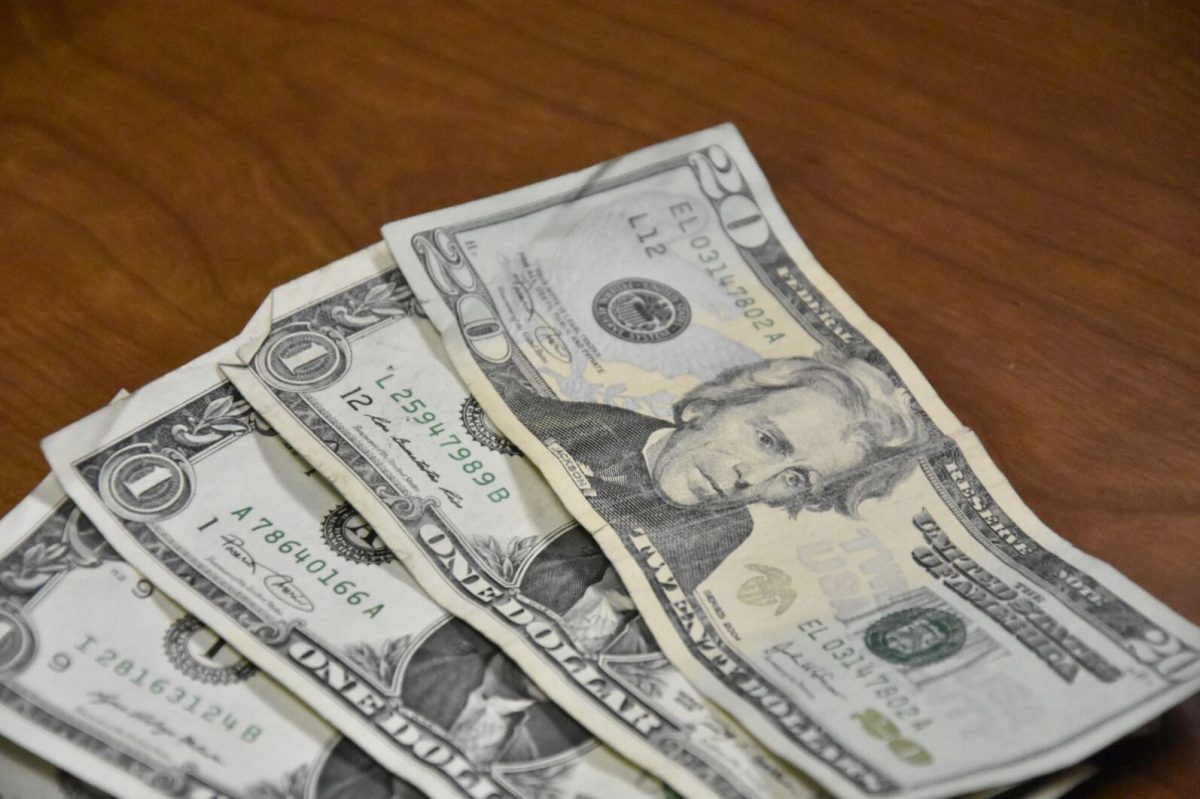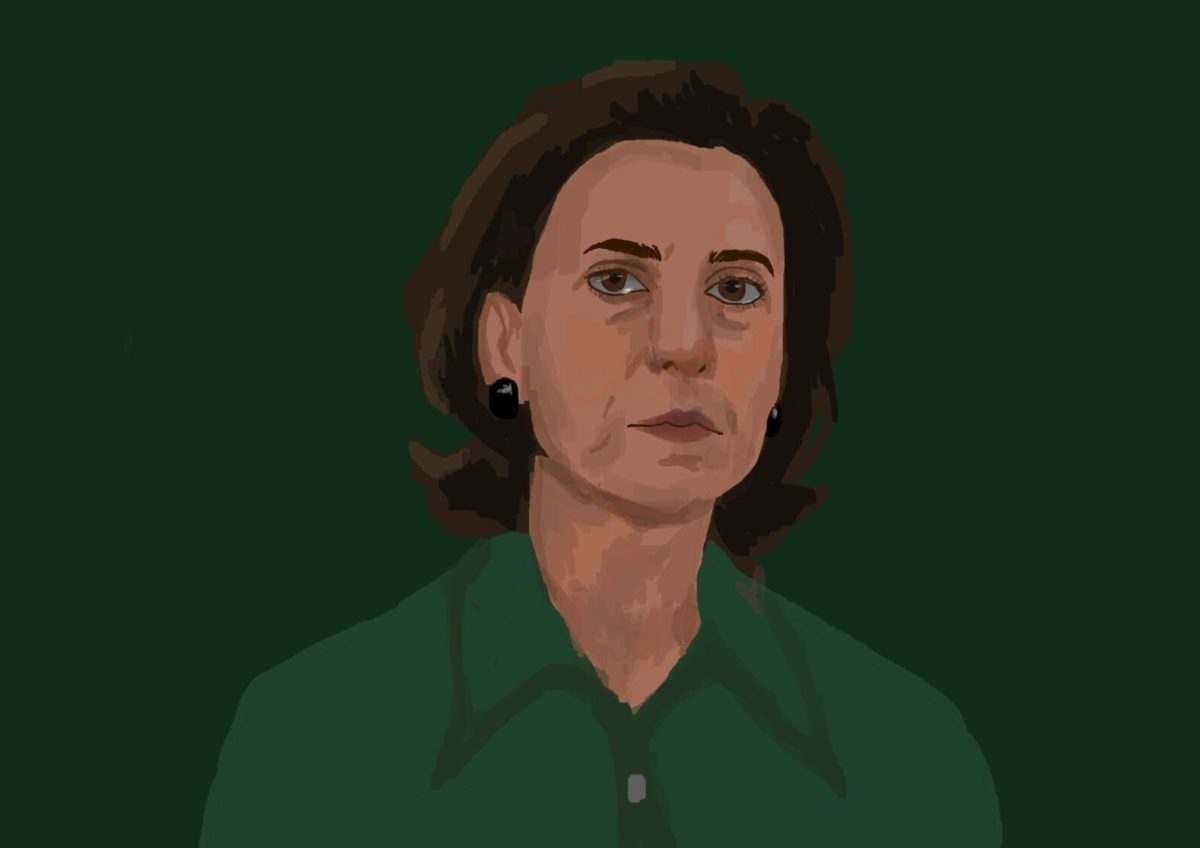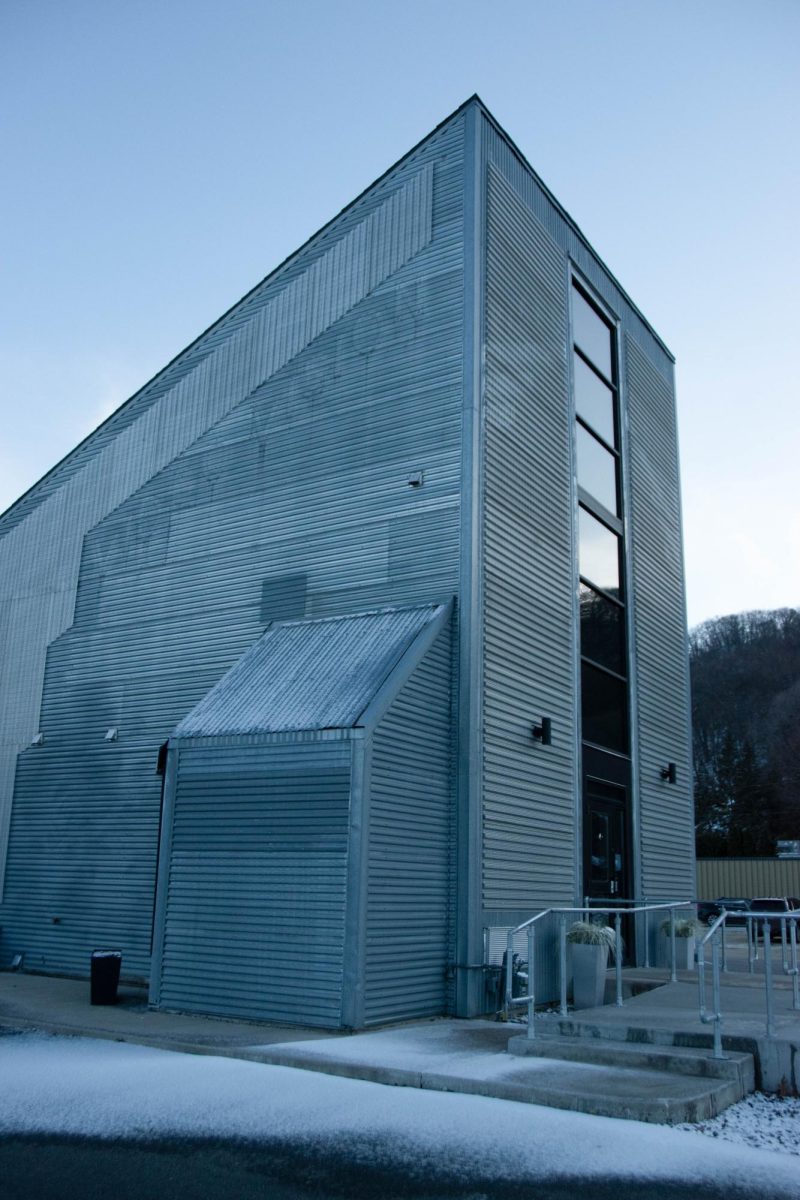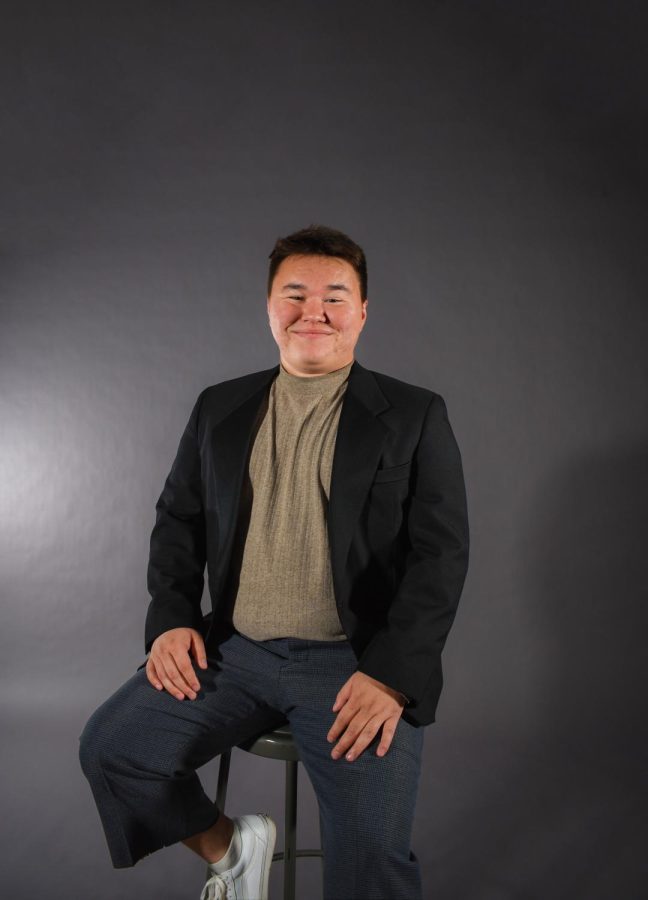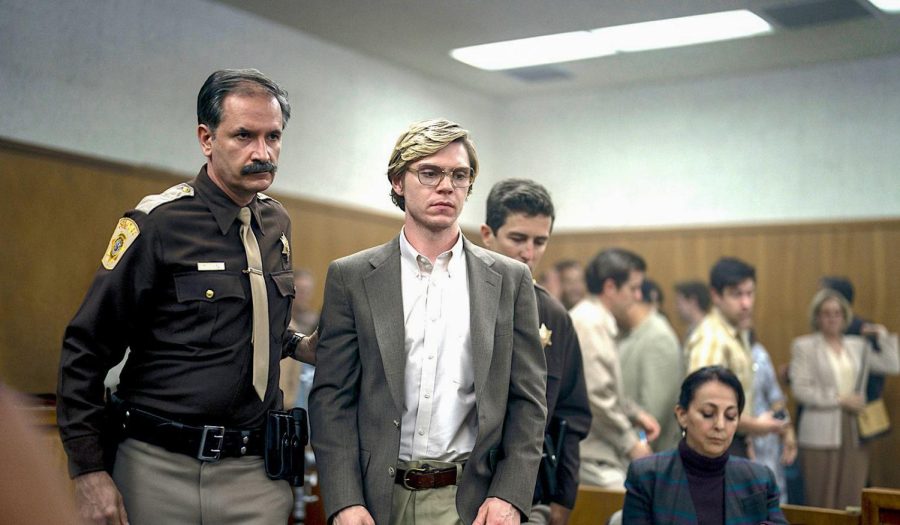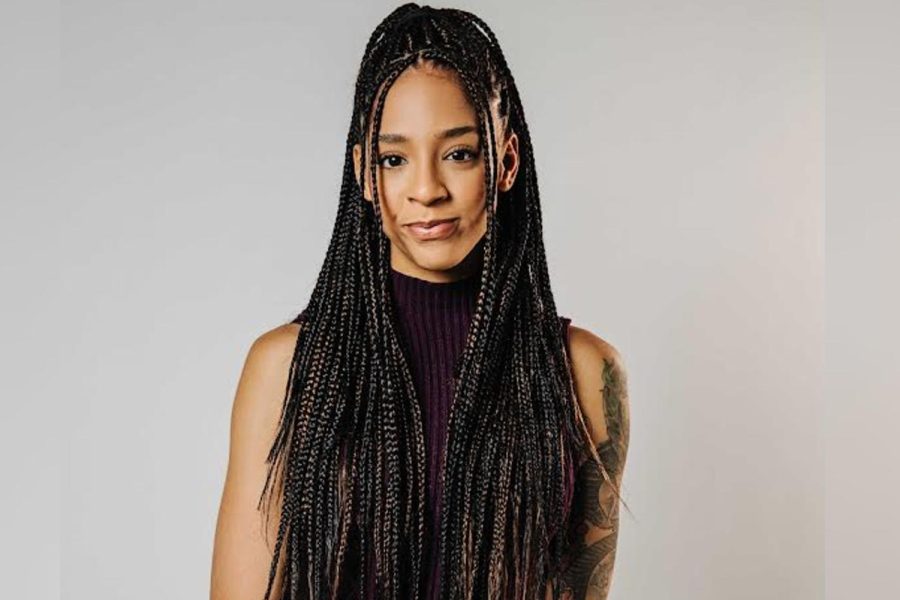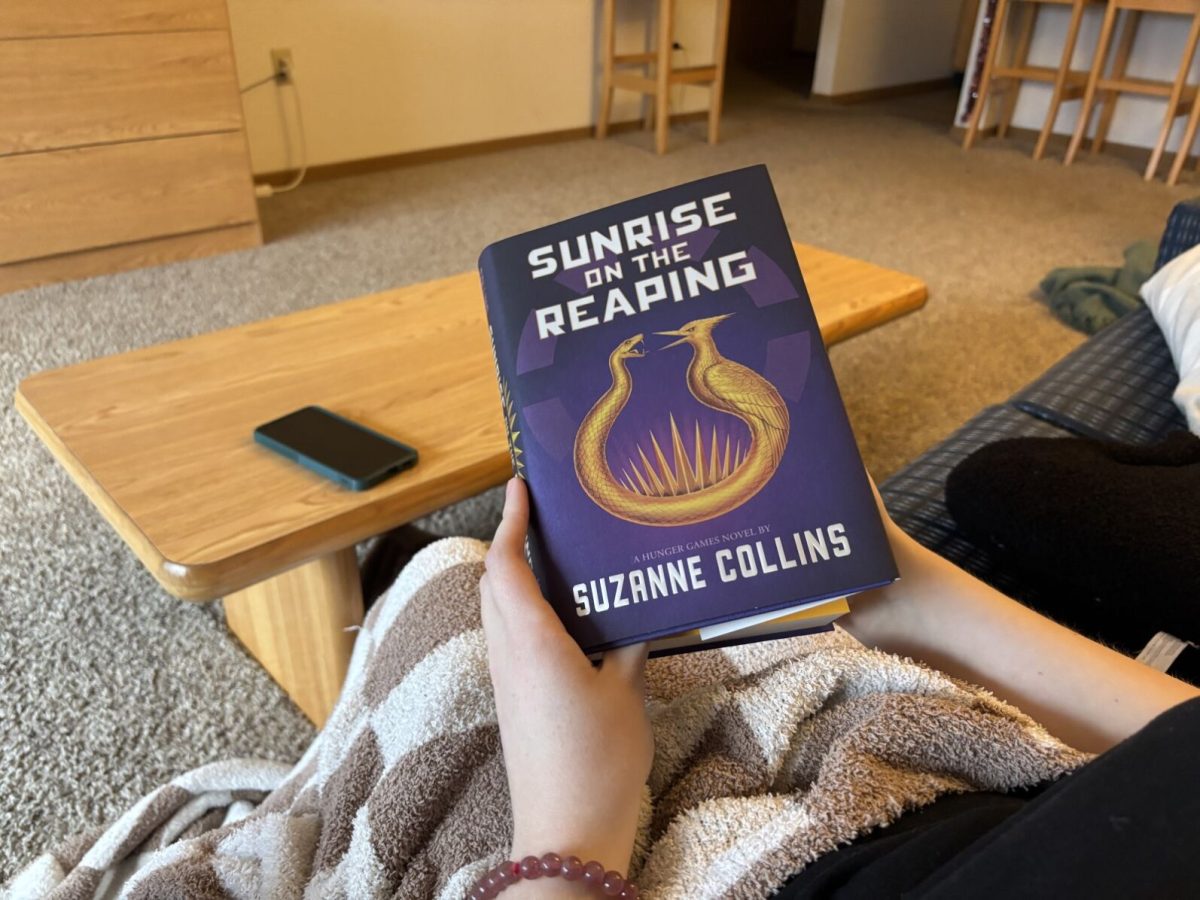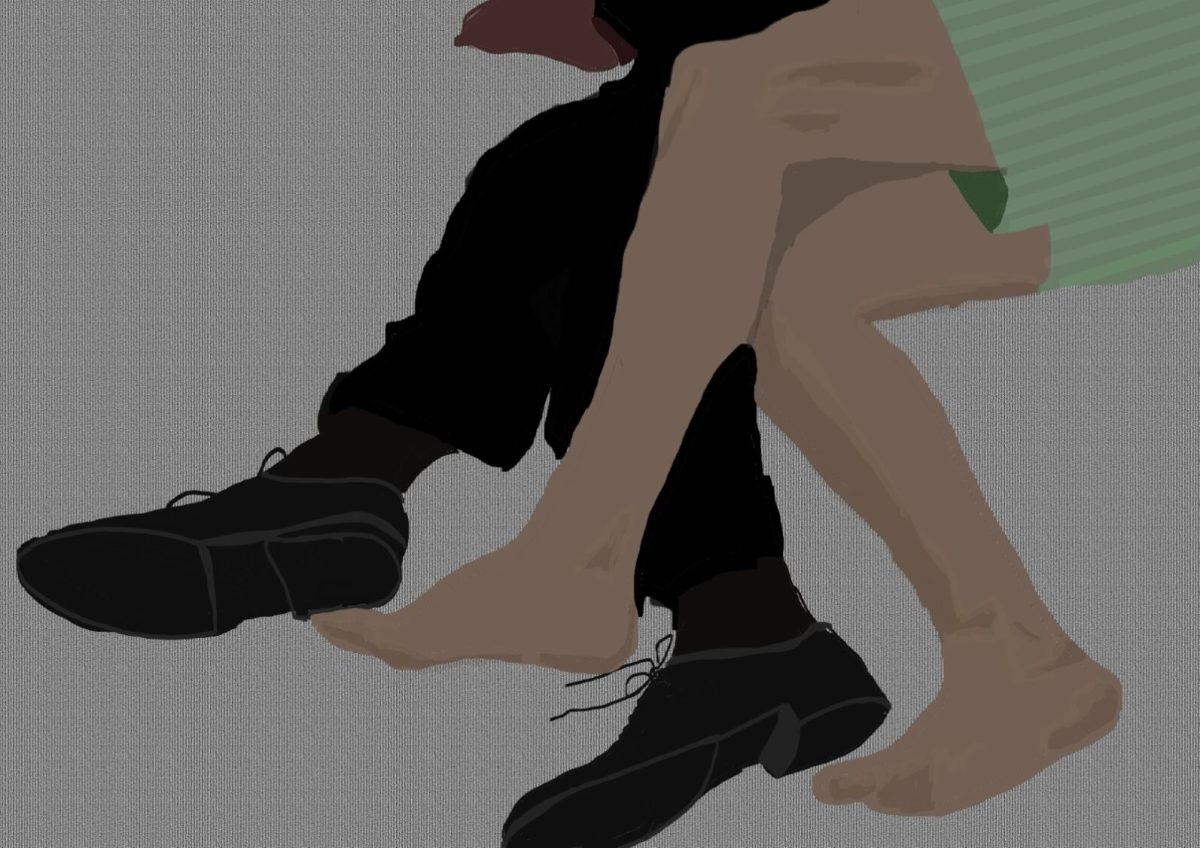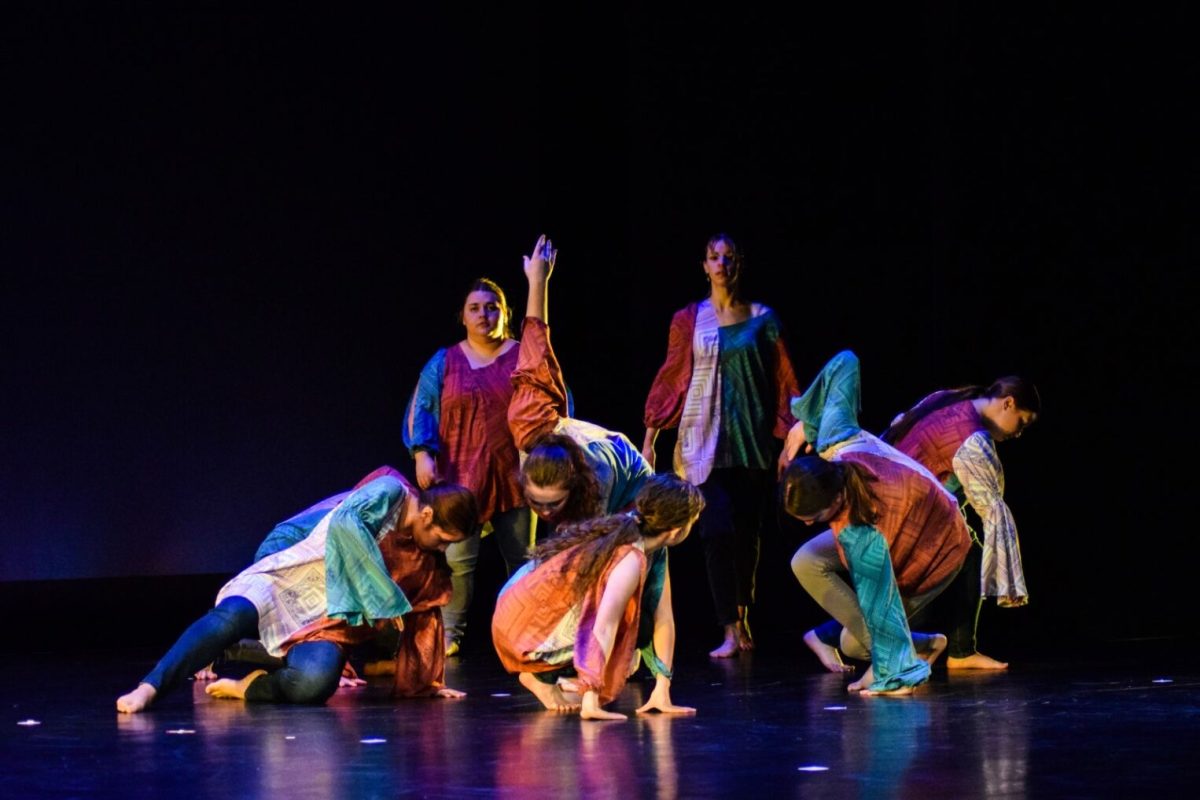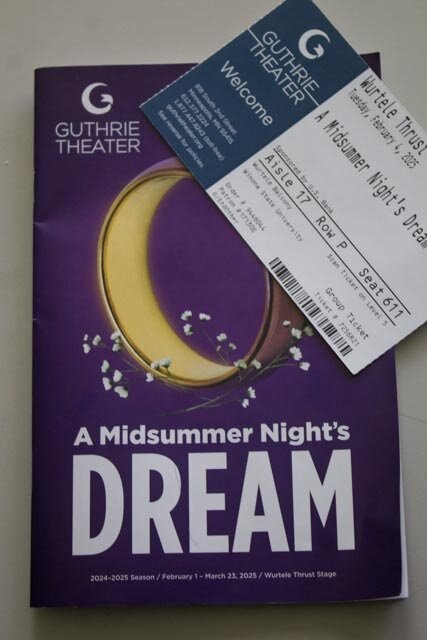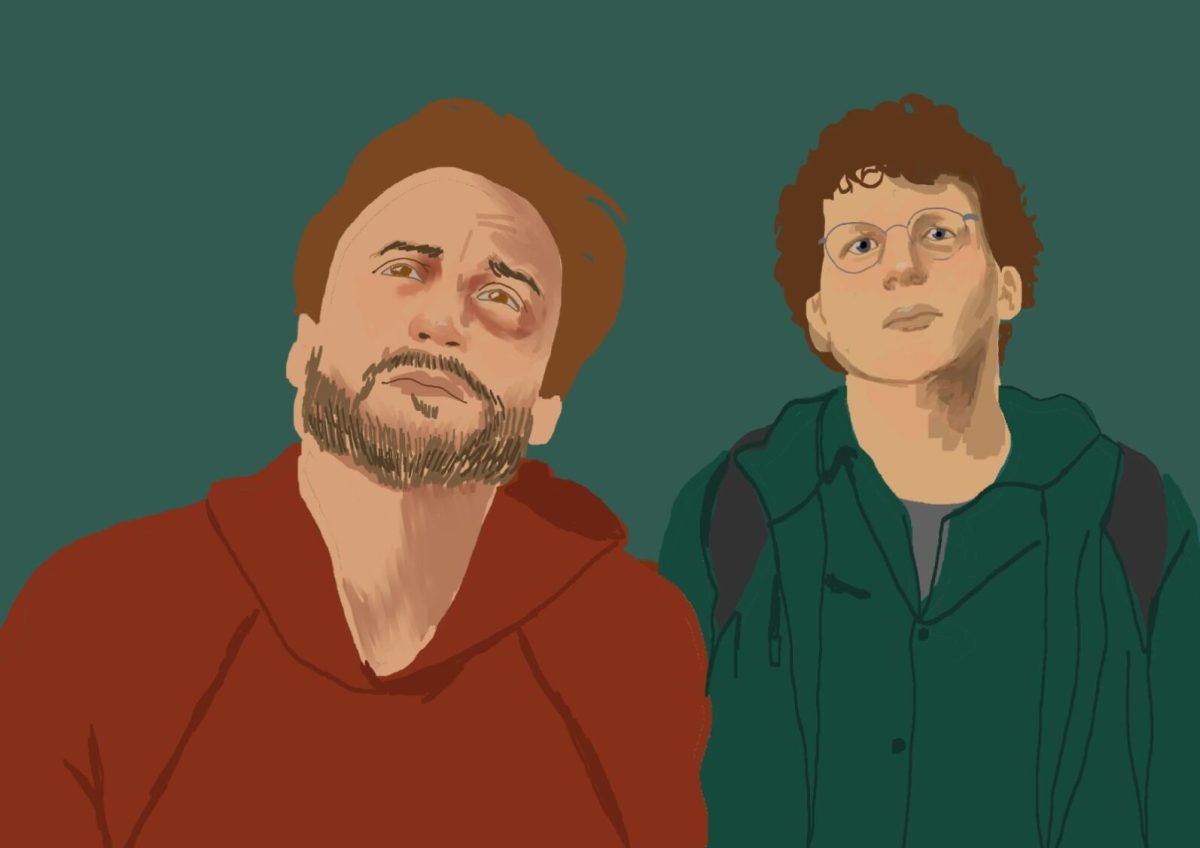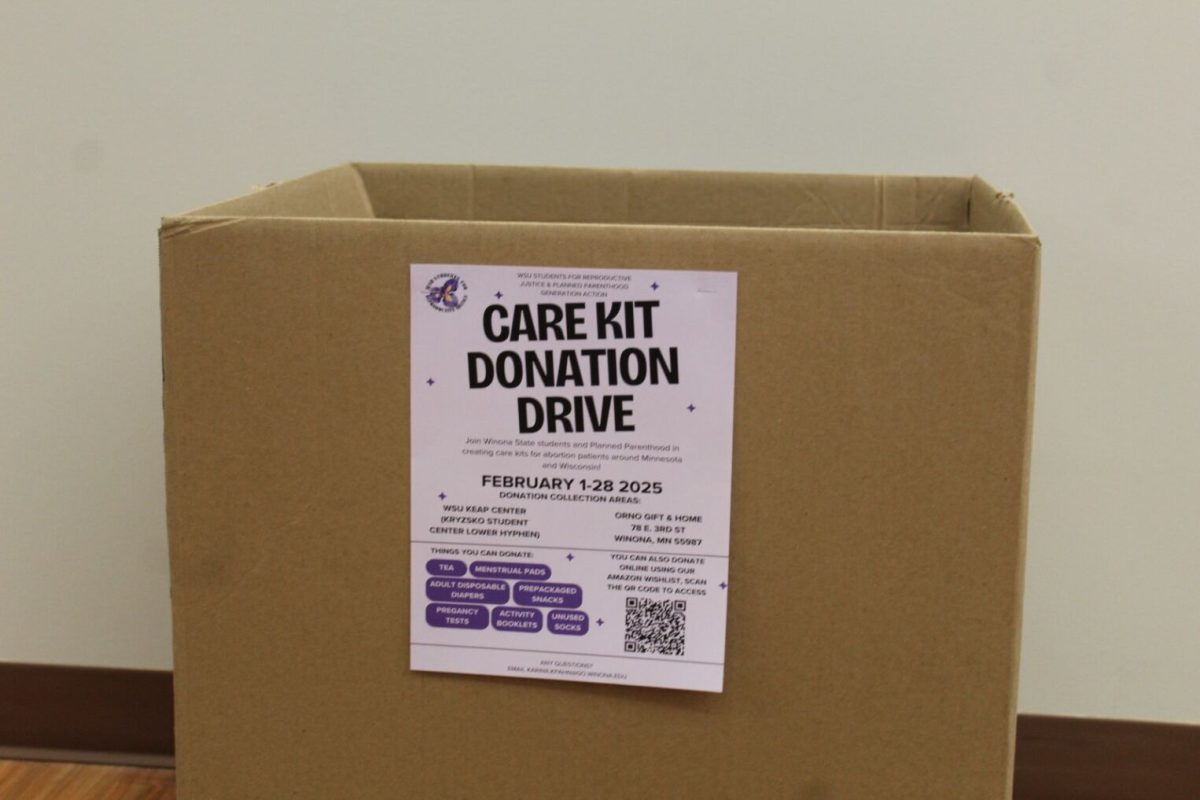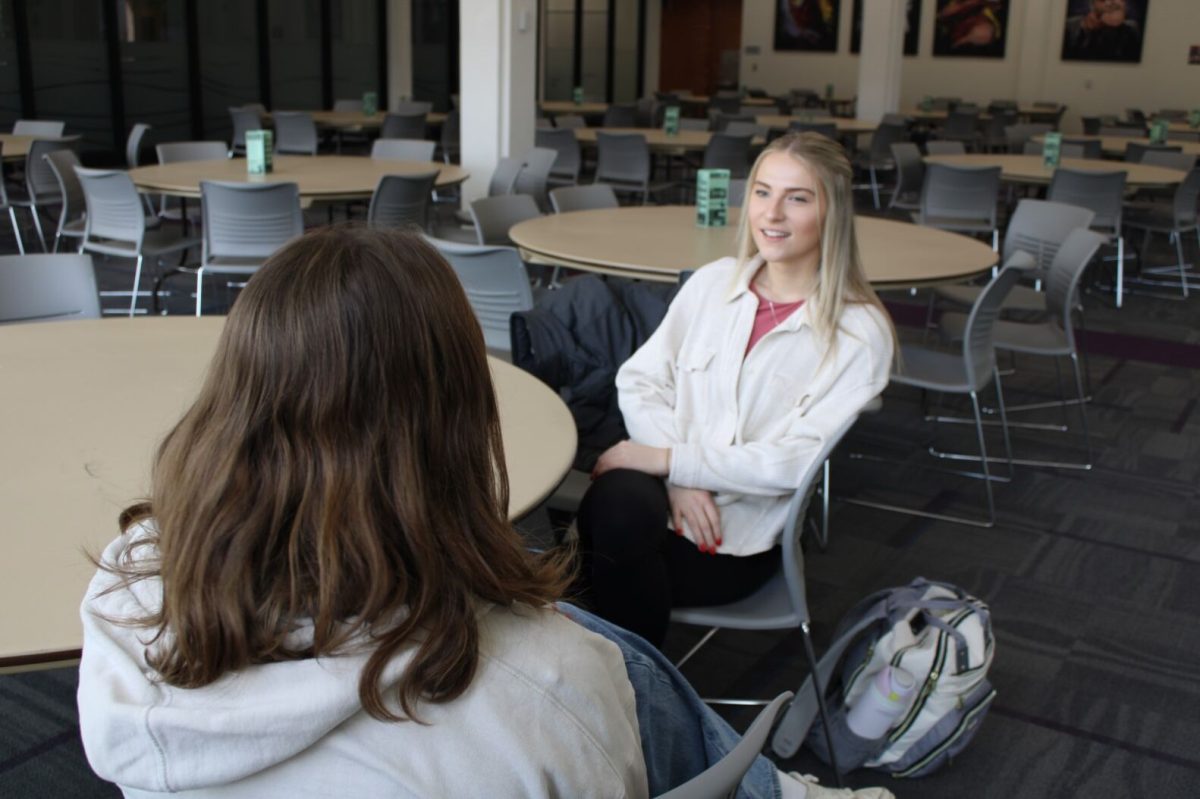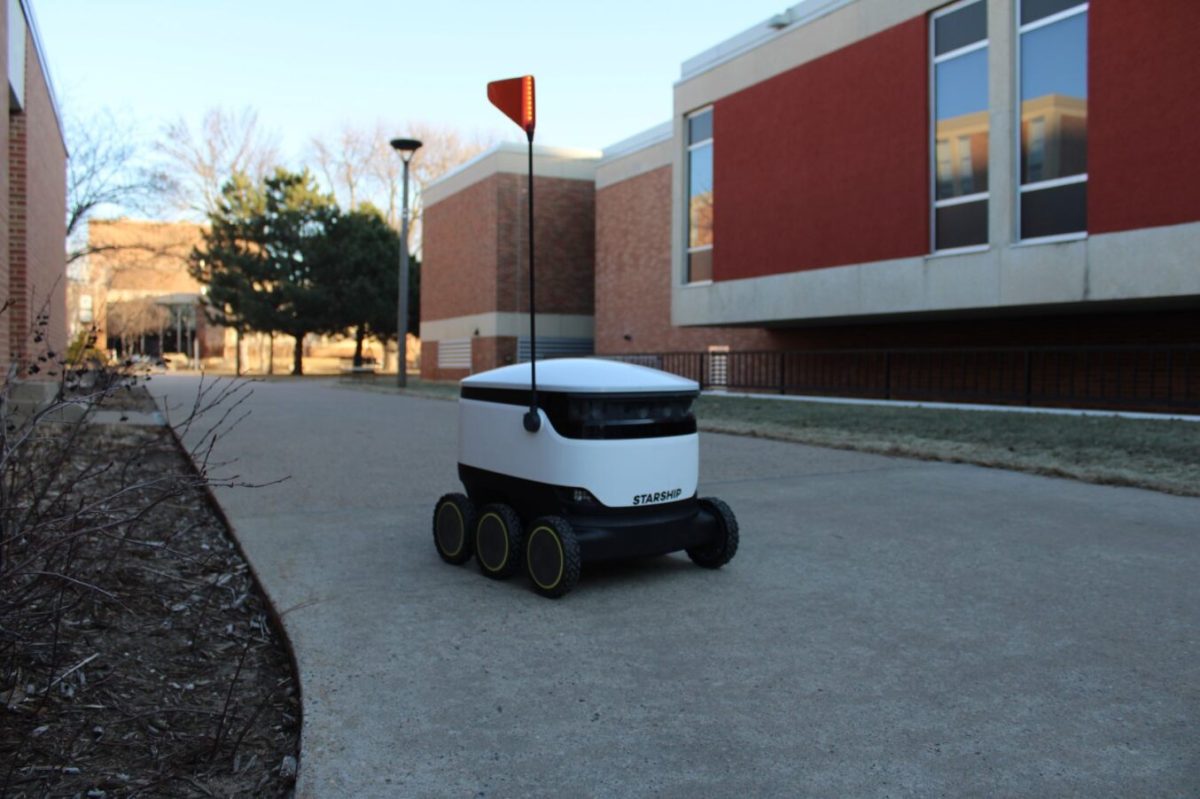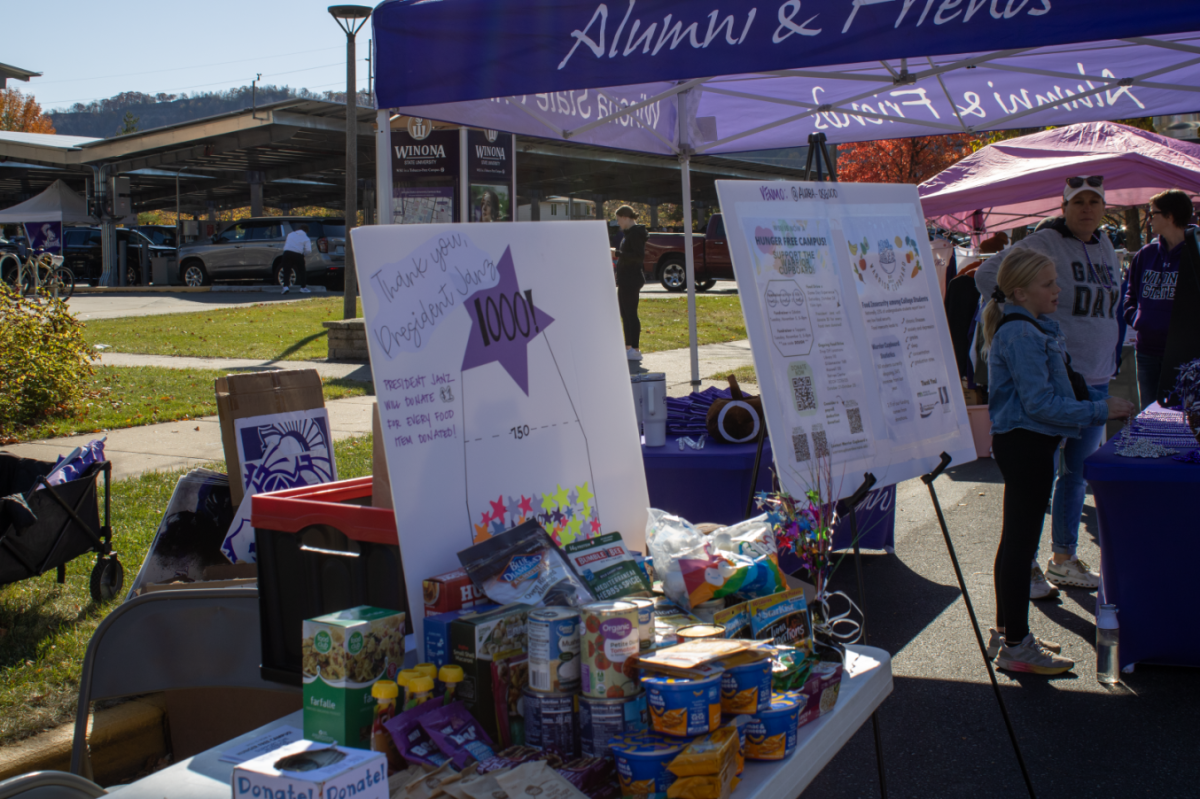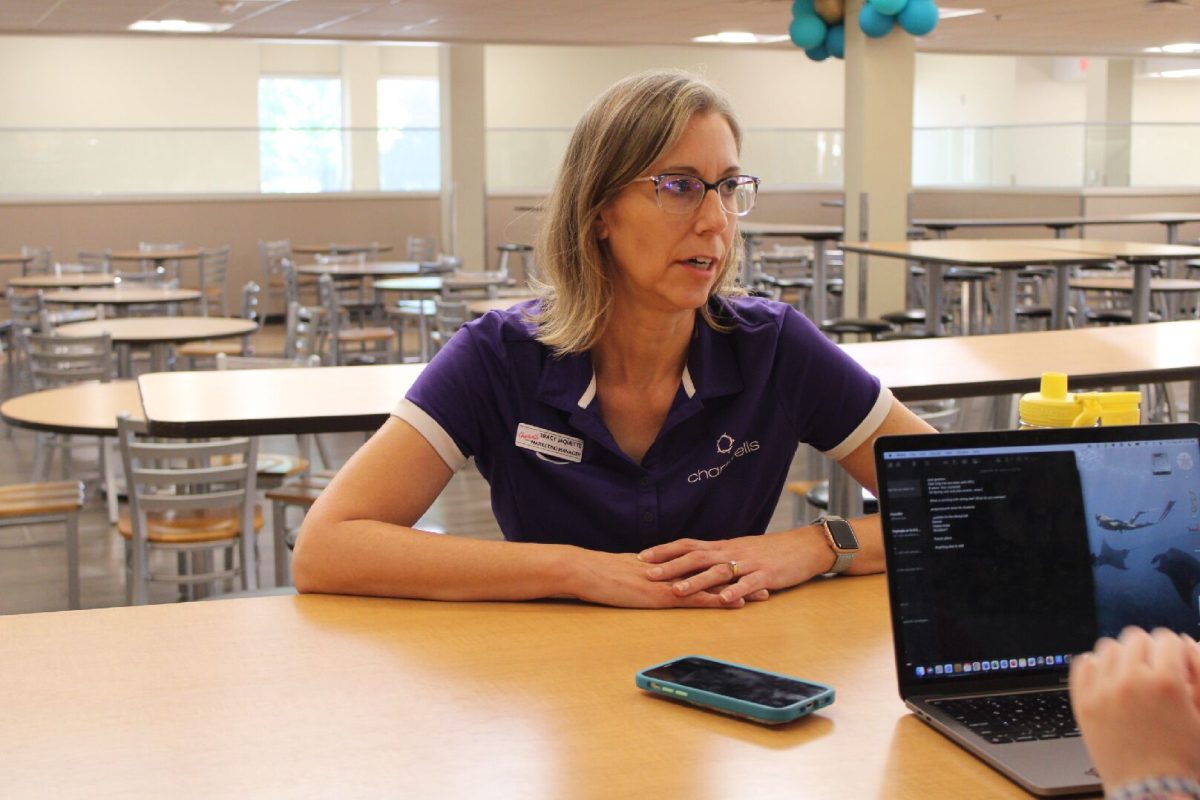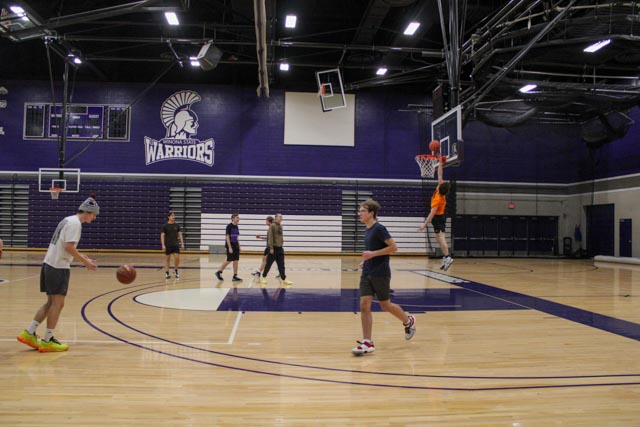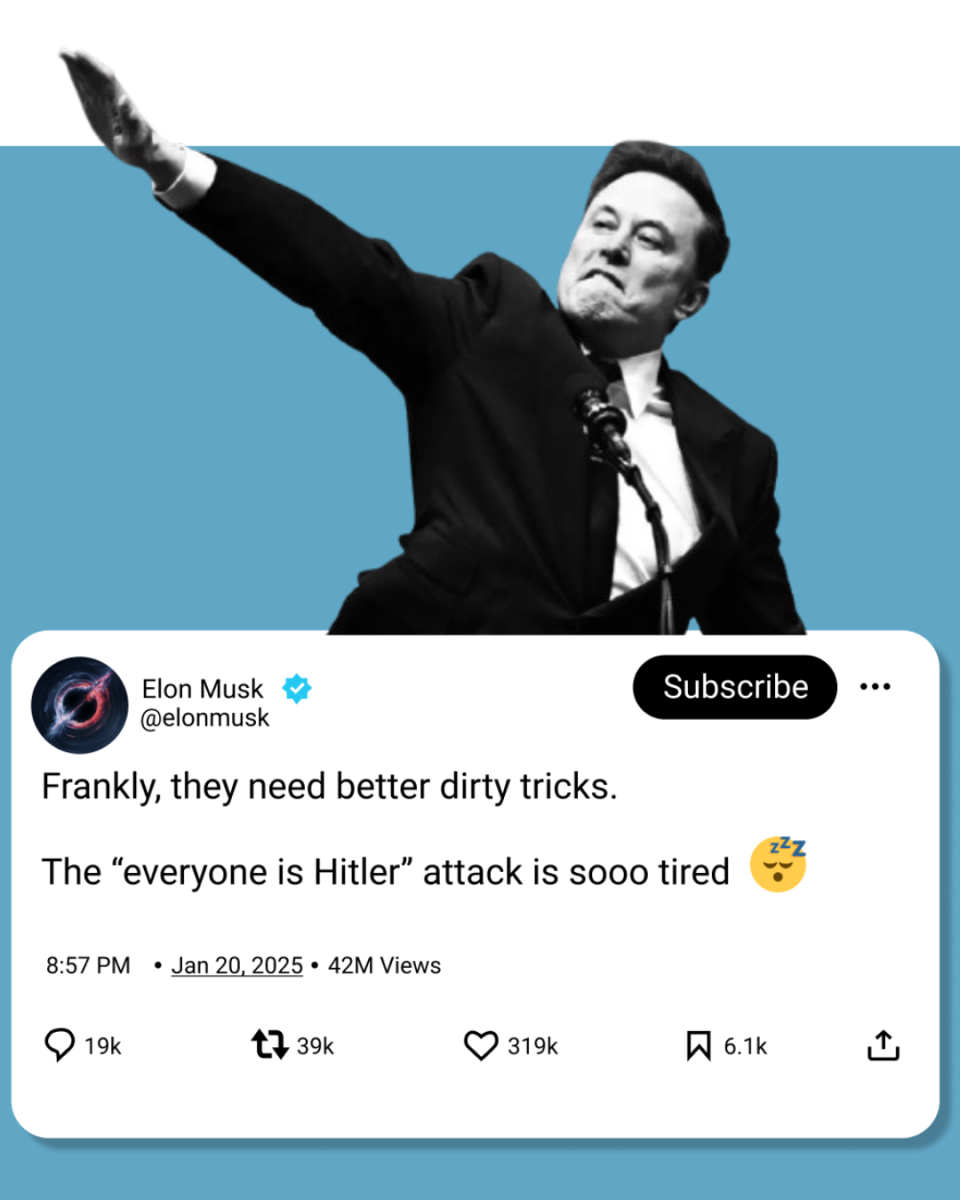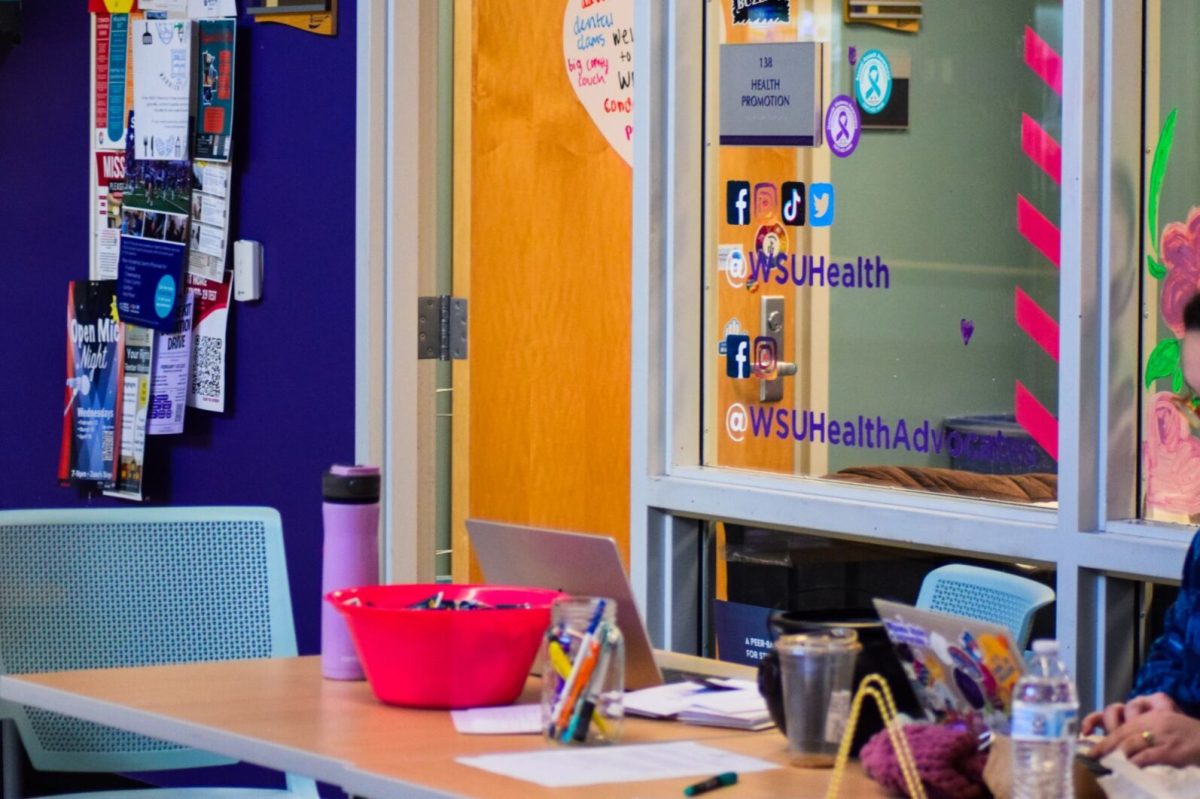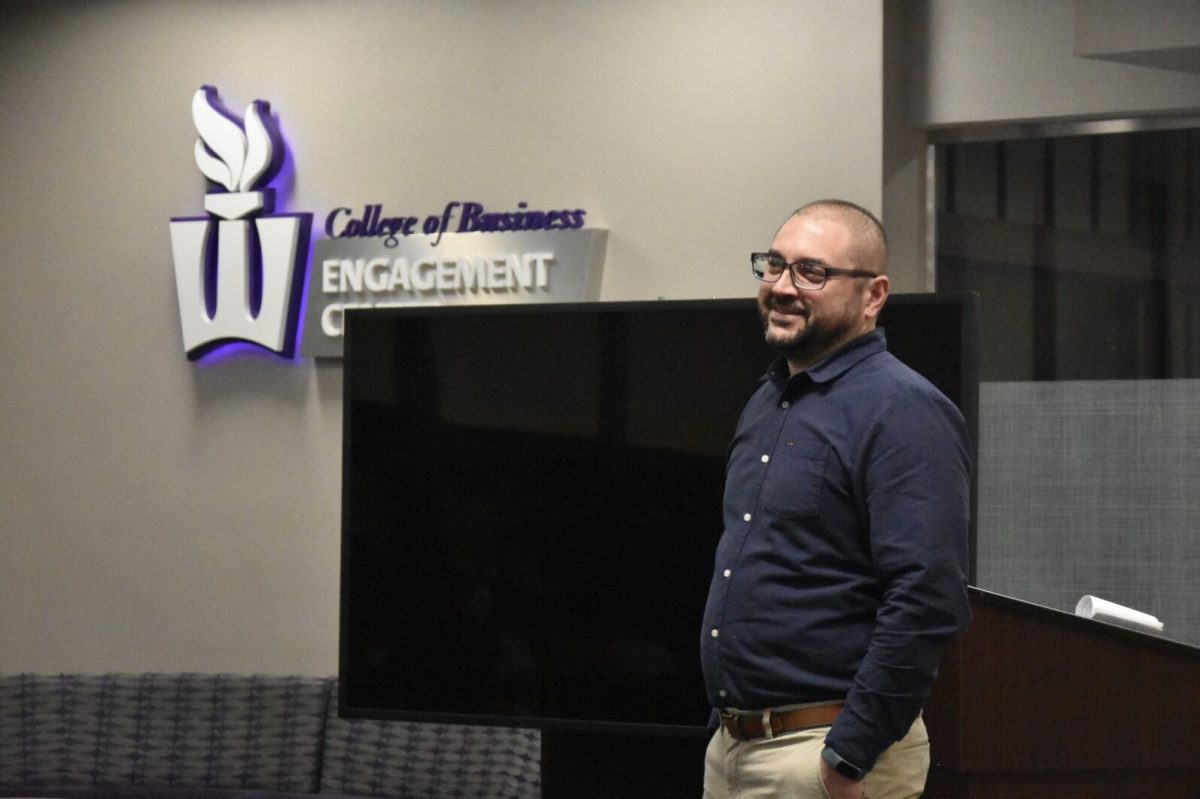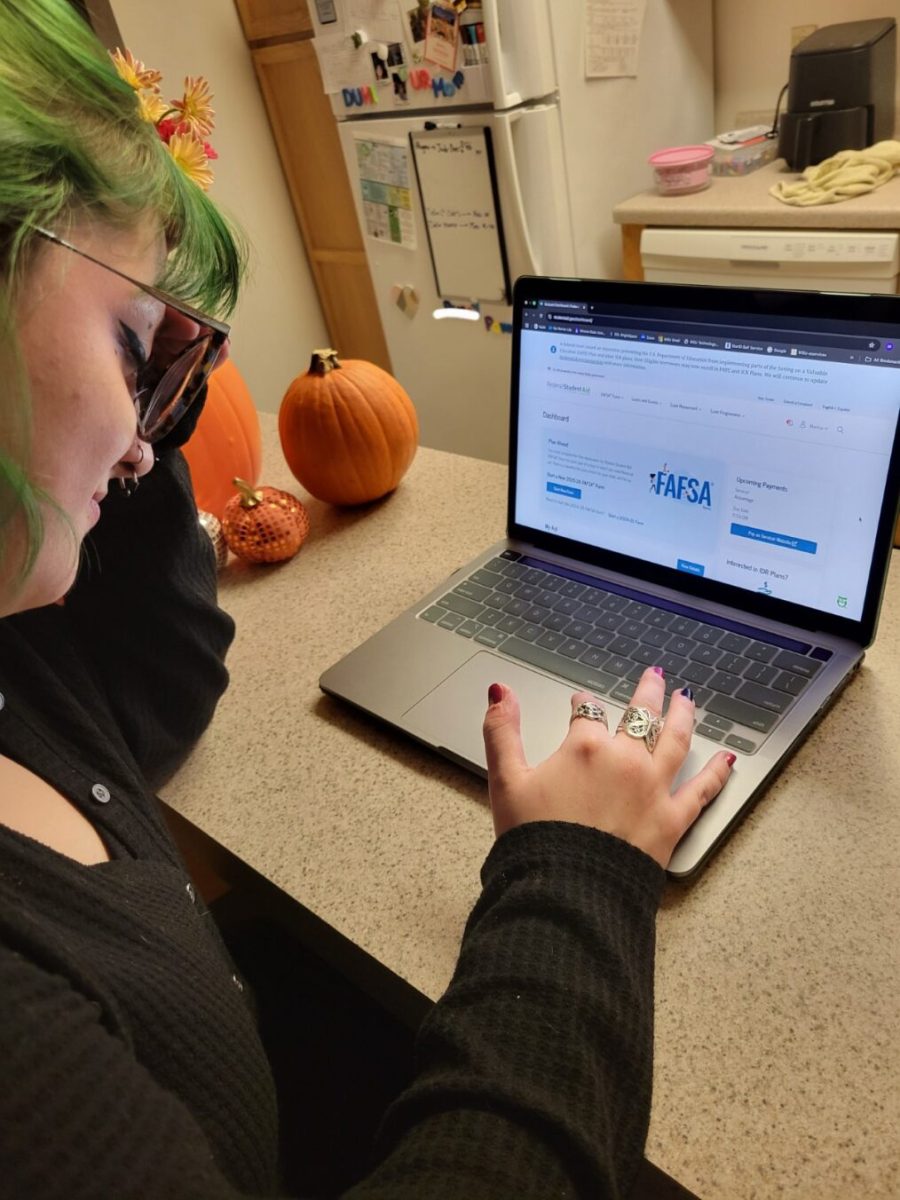On Wednesday, Mar. 26, 2025, a panel from the Minnesota History Department (MNHS) came to Winona State University to present their research for the greater Minnesota two-spirit and LGBTQIA+ history map. The panel was a preview for the Greater Minnesota Two-Spirit and LGBTQIA+ History Map exhibit planned to run from Apr. 1 – Apr. 31 in the Krueger Library.
Four people from the MNHS explained the timeline of the project which began back in 2019 with a spreadsheet full of gender variant and same sex orientated individuals who lived in MN before 1950. The main motivation was to disprove the assumption that this history didn’t exist in Minnesota before then. That LGBTQIA+ people existed before Stonewall and in rural areas like MN.
Ulysses Swanson, a community engagement intern at the MNHS brought onto the project in Sept. 2024, focuses on background historical research and writes guides for the project.
“While this project started as an individual passion project, the goal now is to connect with community members and organizations to not only preserve the queer past but find ways to support LGBTQIA+ people and projects now, with resources available to us through an institution like MNHS.” Swanson said.
The exhibit will highlight two aspects of the project. The first focuses on the underrepresented histories, such as Indigenous people, Two-Spirit people and people living in rural areas. The second shares three queer histories within Winona from the 1800s to the 2000s, showing that LGBTQIA+ history is in Winona too.
The website showcasing the map and highlighting individuals’ stories will be published 15 May, 2025. Over the summer the map will be brought to Pride celebrations across MN. They will also be collaborating with local organizations to host other events.
Mary Jo Klinker, a professor and the director of Women’s, Gender and Sexuality Studies (WGSS) began talking to community engagement members at the MNHS in Fall 2024 and was able to meet the research team. The panel was also in partnership with WSU Grants and Sponsored Projects and the WSU Krueger Library.
“Providing students and our community an opportunity to learn about how the researchers of the map committed to the self determination of communities, gave the agency back to them through oral histories, and the care that is necessary to build reciprocal relationships in community research. The researchers provided important examples of committing to the care of listening to oral histories, the impact of oppression on communities, and how they collaborated to build relationships and ensure that Two-Spirit and LGBTQIA+ histories belong to communities.” Klinker said.
During the panel, they stressed how important it was for them to show care for the stories and keep in mind how they will be preserved and represented. While researching they kept coming across LGBTQIA+ history being hidden, or misinterpreted. Often, the archives or other primary sources didn’t give all the information. The history map aimed to draw those connections and make sure nothing was left out.
WGSS 220: Intro to LGBTQIA+ Studies and WGSS 374: Queer Theories and Politics were also present at the panel and were able to ask questions relating to the MNHS’s research. They will also have the opportunity to engage with the exhibit and add archival research to the history.
TL Jordan, an instructor in the WGSS department, wanted to incorporate the exhibit into their classes because both of the classes have engaged with queer history and discussed the use of oral histories and archives as research methods.
“As the panel discussed, queer history is often obfuscated and rendered invisible through intentional and unintentional means as history is archived. We want our students to not only learn to engage in this research themselves, but do so in ways that respect the humanity and autonomy of the queer subjects that we are learning about through that research.” Jordan said.
Community members and students are encouraged to visit the map and share site suggestions. The team at the MNHS are hoping to continue their research and keep filling in the gaps with more queer histories.
“After the map launches, our work won’t be over. We intend to continue collaborating with the community members we have spoken with to date and update the map as those who see the map share site suggestions. This project won’t be a one-and-done affair but something that will continue to be built upon over time.” Swanson said.

